Leg Fracture — Ostheosynthesis: treatment in the Best Hospitals of Germany
Treatment prices are regulated by national law of the corresponding countries, but can also include additional hospital coefficients. In order to receive the individual cost calculation, please send us the request and medical records.
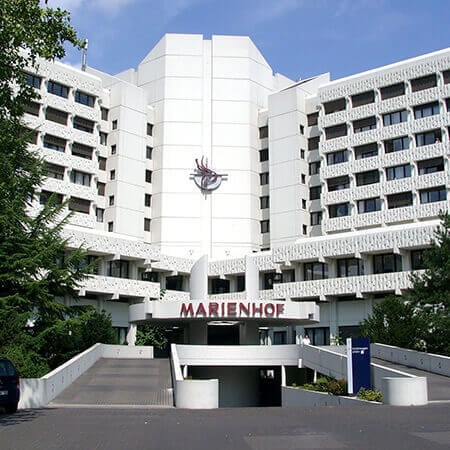
Department of Adult and Pediatric Orthopedics, Traumatology, Foot Surgery
According to the prestigious Focus magazine, the Department of Adult and Pediatric Orthopedics, Traumatology, Foot Surgery ranks among the top German medical facilities specializing in hip surgery! The department offers the full range of high-precision diagnostics and conservative and surgical treatment for diseases of bones, joints, muscles, ligaments, and tendons. One of the department's key areas of clinical practice is large joint arthroplasty. In this area, the department is awarded the prestigious endoCert certificate. The doctors in the department's operating rooms successfully perform knee, hip, and shoulder replacement surgery. Whenever possible, preference is given to minimally invasive joint replacement surgery. An important part of the work of the department's doctors is the treatment of orthopedic diseases and musculoskeletal injuries in children. The specialists at the medical facility also have long experience in helping patients with foot pathologies and deformities, including hallux valgus, hallux rigidus, hammer toes and claw toes, metatarsalgia, etc. The department's doctors have in their arsenal state-of-the-art equipment and modern treatment methods that allow for the achievement of excellent therapeutic results. More than 3,500 inpatients and about 17,000 outpatients are treated at the medical facility every year.


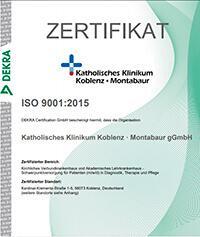
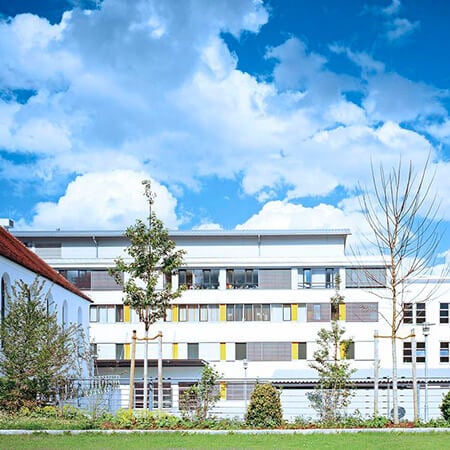
Department of Orthopedics, Traumatology, Spinal Surgery and Foot Surgery
According to the Focus magazine, the Department of Orthopedics, Traumatology, Spinal Surgery and Foot Surgery ranks among the top German medical facilities in treating orthopedic diseases and spinal surgery! The department carries out comprehensive examinations and effectively treats musculoskeletal diseases and injuries. The department has about 130 beds for its patient hospitalization. Doctors annually admit more than 4,000 patients for inpatient treatment. Several thousand surgical interventions of varying complexity are performed on the basis of the medical facility annually. The department offers the services of the certified Maximum Care Joint Replacement Surgery Center (EPZmax) and the certified Trauma Center. In addition, the department's specialists have vast experience in treating spinal and foot pathologies. The main goal of the department's doctors is to restore mobility and eliminate pain. The specialists always prefer an individual approach to each patient and his clinical case.






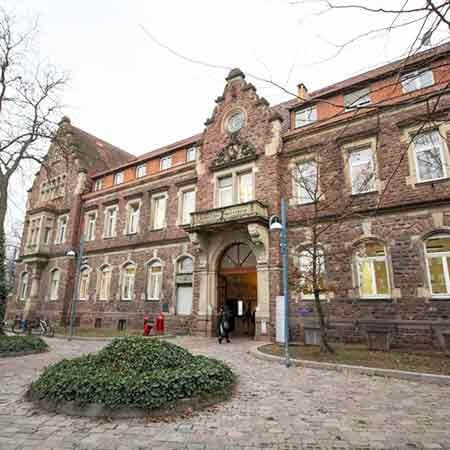
Department of Adult and Pediatric Traumatology, Orthopedic Surgery, Hand and Foot Surgery
The Department of Adult and Pediatric Traumatology, Orthopedic Surgery, Hand and Foot Surgery offers the full range of modern services to the patients with musculoskeletal diseases and injuries. The key areas of specialization include conservative and surgical treatment of injuries and degenerative changes in the limbs, joints, pelvis and spine. The department is certified by the German Trauma Society (DGU) and has an SAV certificate, which indicates the excellent achievements of the medical facility in the treatment of injuries of any severity. The department performs most surgical interventions using minimally invasive and endoscopic surgical techniques, thanks to which the patients can regain their mobility and return to their usual daily life in the shortest possible time. The department's experienced surgeons perform more than 6,000 operations annually, including particularly complex ones. About 3,000 inpatients and more than 20,000 outpatients receive medical care here every year. The department has 90 beds.


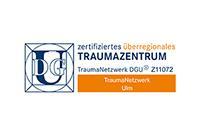
Lower limb fractures include an impairment of the integrity of the femur, tibia, fibula, and foot bones. If you are injured, you can undergo your treatment in Germany. In most cases, doctors use conservative treatment methods that keep a patient mobile. All manipulations are performed with adequate anesthesia. The treatment of leg fracture in Germany can be successful, even for chronic and complicated injuries.
Content
Osteosynthesis can be closed or open. Doctors in Germany use more patient-friendly osteosynthesis systems than in most other countries. A person can thus walk and maintain their lifestyle as close as possible to the usual one.
You can seek medical attention from the Catholic Clinic Koblenz-Montabaur, the Brothers of Mercy Hospital Munich, or the Municipal Hospital Karlsruhe.
Do not hesitate to contact the specialists from the Booking Health company and we will take care of the arrangements for your trip. The Booking Health team will recommend a hospital and a doctor, make an appointment without a long wait, help you to apply for a visa and prepare medical documents, provide an interpreter, control the cost of medical services provided and all treatment stages.
Hip fractures
Femoral neck fractures are the most common among proximal femur fractures. They often occur in older patients suffering from osteoporosis, with minimal impact on the bones. Due to a lack of blood supply, such fractures heal slowly, and prolonged immobilization leads to severe complications. Conservative management of femoral neck fractures is therefore a thing of the past as it has been replaced by active surgical tactics. Hip replacement surgery is performed by doctors, and open bone repositioning with fixation is used less frequently.
Intertrochanteric and pertrochanteric proximal femur fractures are less common. They are characterized by a large area of fracture and contact of fragments. The blood supply, however, is good, so these fractures can be treated with conservative methods. Doctors use skeletal traction for up to 1.5 months. The immobilization period is at least 3 months. As a rule, surgery is performed only if a patient's early activation is required. The bones are fastened with screws, L-shaped plates, or nails. Healthcare professionals at hospitals abroad use dynamic screws, after the implantation of which external immobilization is not required and a person can walk after 3 weeks.
Diaphyseal femur fractures occur when the bone fractures closer to the central part, between the hip and knee joint. This is a severe injury with bleeding, and a person often develops shock. Treatment can be conservative or surgical. Conservative treatment consists of fixing the hip with a plaster cast in the abduction position. The higher the fracture, the stronger the abduction. Some types of fractures can be treated with skeletal traction. Surgical treatment includes intramedullary osteosynthesis. The limb fixation lasts 3 months.
Knee fractures
Knee fractures are injuries to the bones that form the knee joint. These are the patella, the lower part of the femur and the upper part of the tibia.
Fractures of the femoral and tibial condyles are intra-articular. If there is no displacement, patients are treated with conservative methods. The joint is punctured, blood is removed, painkillers are injected, and a bandage is applied. Immobilization terms are 1-2 months, depending on how many condyles are broken. If the fragments are displaced, a closed repositioning is performed. If ineffective, doctors resort to skeletal traction. Sometimes it is necessary to perform surgical repositioning with the fixation of fragments and osteosynthesis.
Patellar fractures result from a fall on the knee joint. A displacement of up to 3 mm can be treated with conservative methods. If the displacement is greater, surgery will be performed as soon as possible. The term of immobilization of the limb is one and a half months.
Lower leg fractures
There are two bones in the lower leg, namely, the tibia and the fibula.
Diaphyseal tibial fractures are usually treated with conservative methods. If there is a displacement, a manual or hardware reposition is performed with the follow-up application of a bandage. For patients with oblique and spiral fractures, skeletal traction is performed for up to one and a half months, but osteosynthesis is more often used since it allows a person to remain mobile.
Isolated fibula fractures are rare. Treatment consists of immobilizing the limb with a plaster cast for 3 weeks. The bone is thin and heals quickly. A month later, a person's ability to work is restored.
Ankle fractures
Ankle fractures are the most common leg fracture. A person has two ankles, namely medial and lateral. They are located in the ankle joint. Their fractures account for 20% of all skeletal fractures. More than half of them occur without any displacement or with minimal displacement that does not require any repositioning. Treatment is conservative: matching fragments, if required; immobilization in the case of lateral ankle fracture lasts 1 month, and in the case of medial ankle fracture it is for 1,5 months. If two ankles are fractured, osteosynthesis may be required.
You are welcome to use the Booking Health service to undergo your diagnostics, treatment of your leg fracture, and orthopedic rehabilitation in Germany. On our website, you can find prices, compare the cost of treatment in different Trauma Centers, and make your treatment appointment at the best price. The specialists from the Booking Health company will help you to find the most suitable clinics in Germany and take care of the arrangements for your trip.
Authors:
The article was edited by medical experts, board-certified doctors Dr. Nadezhda Ivanisova and Dr. Vadim Zhiliuk. For the treatment of the conditions referred to in the article, you must consult a doctor; the information in the article is not intended for self-medication!
Sources:

